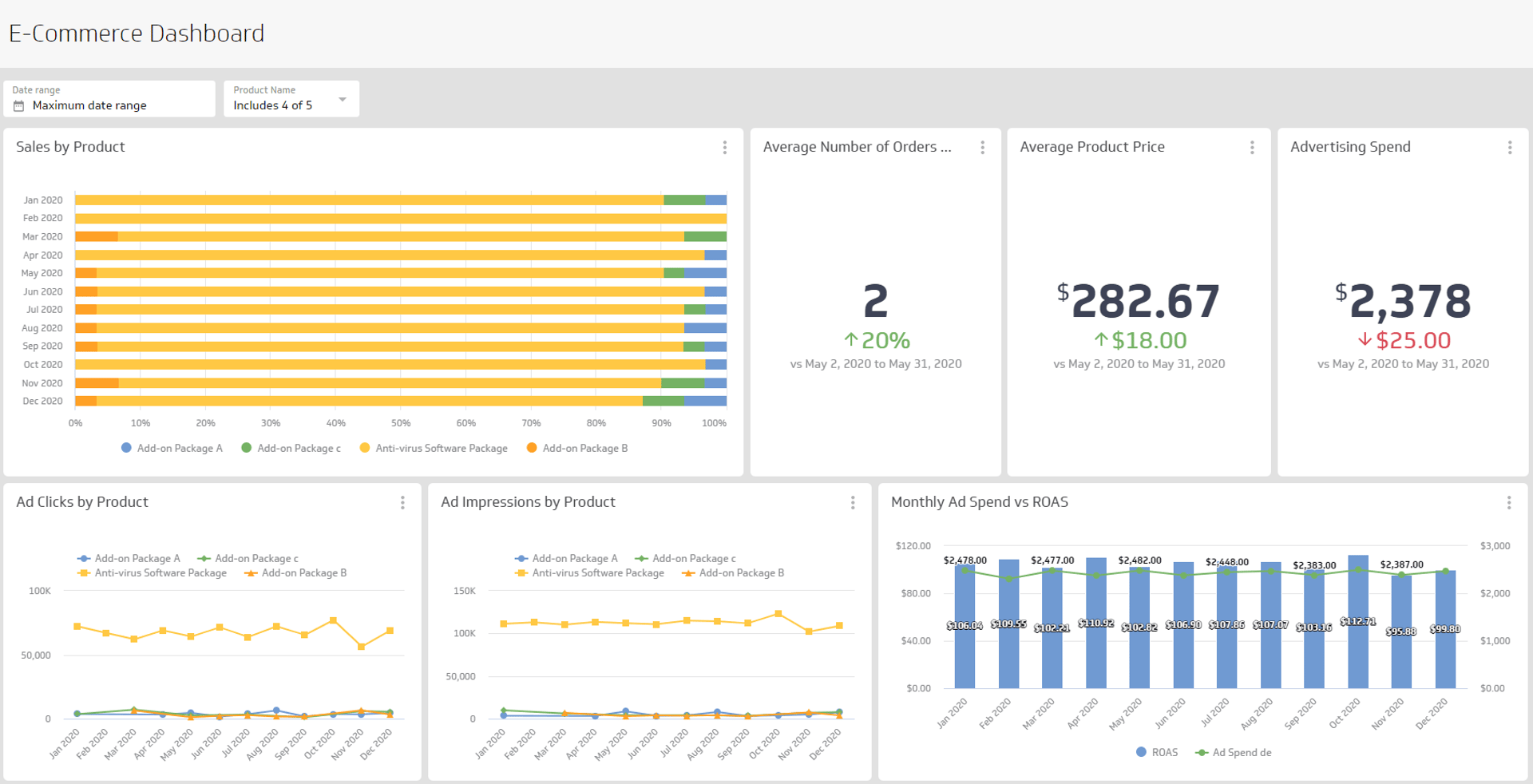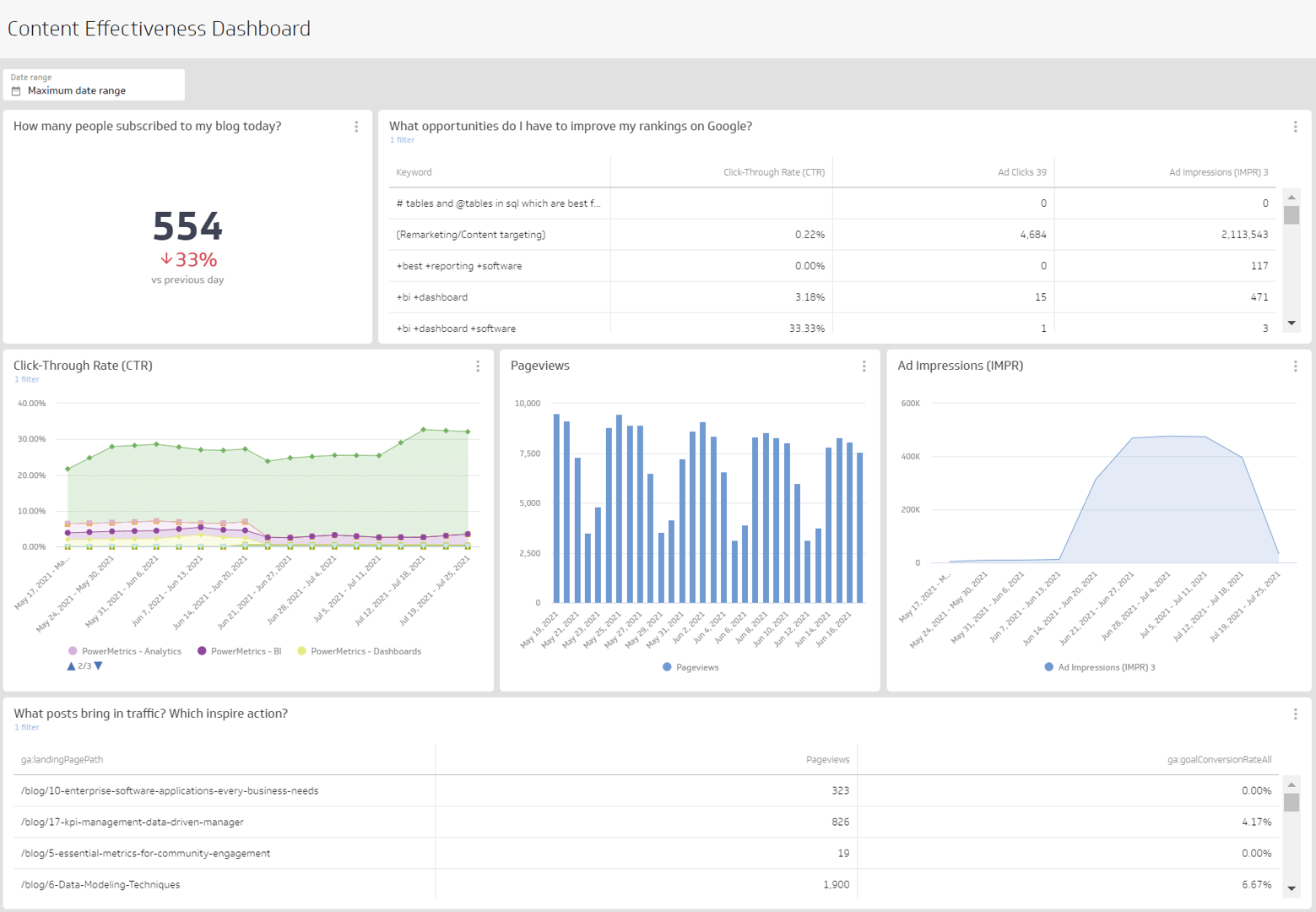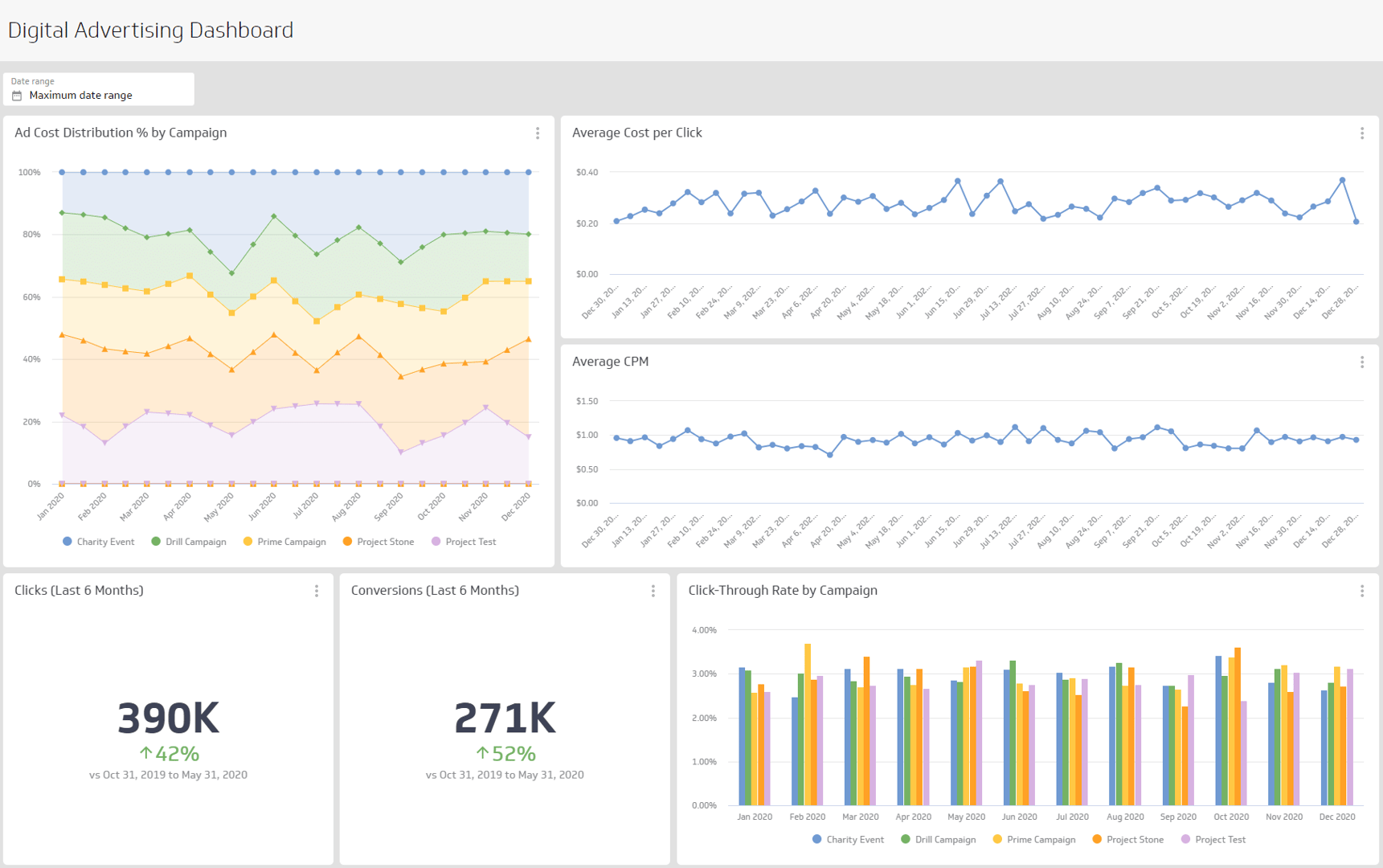Ecommerce Dashboard
How are you engaging and retaining your customers?
Track all your Ecommerce KPIs in one place
Sign up for free and start making decisions for your business with confidence.

What is an Ecommerce Dashboard?
An Ecommerce dashboard is a comprehensive, data-driven tool that consolidates and displays crucial performance metrics and insights for online businesses, facilitating informed decision-making, budget allocation, and strategy optimization. By aggregating data from various sources, such as sales, web traffic, social media, and customer behavior, the dashboard provides a holistic view of an ecommerce business's performance in real time.
The primary goal of an Ecommerce dashboard is to enable teams to monitor key performance indicators (KPIs) that directly impact business growth and success. By identifying trends, uncovering opportunities, and pinpointing areas for improvement, the dashboard empowers online businesses to make data-driven decisions to enhance their marketing, sales, and customer experience strategies.
In summary, an Ecommerce dashboard is an indispensable tool for online businesses seeking to efficiently manage, analyze, and optimize their performance by harnessing the power of real-time data and insights.
What should you be tracking on your eCommerce Marketing Dashboard?
What you track on your ecommerce marketing dashboard will ultimately depend on what you want to accomplish with the data. If you are looking to track a specific campaign, it’s best to create a separate dashboard to monitor results, but for day-to-day activity, it’s good to track a combination of social media, sales, and web traffic as demonstrated on this dashboard.
Traffic sources are extremely important to monitor on a marketing dashboard because brand discovery is crucial to identify marketing opportunities. For example, if many of your leads are coming through referrals, maybe you should consider offering incentives to current customers to introduce new shoppers. Knowledge like this is so important when thinking about budget allocation, as well as the best way to attract, engage and retain customers.
Related Dashboard Examples


